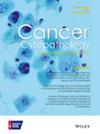AICyte has previously demonstrated a potential role in cervical cytology screening for reducing the workload by using a 50% negative cutoff value. The aim of the current study is to evaluate this hypothesis.
The authors used the Ruiqian WSI-2400 (with the registered trademark AICyte) to evaluate a collection of 163,848 original cervical cytology cases from 2018 to 2023 that were collected from four different hospital systems in China. A breakdown of cases included 46,060 from Shenzhen, 67,472 from Zhengzhou, 25,667 from Shijiazhuang, and 24,649 from Jinan. These collected cases were evaluated using the AICyte system, and the data collected were statistically compared with the original interpretative results.
In 98.80% of all artificial intelligence cases that were designated as not needing further review, the corresponding original diagnosis was also determined to be negative. For any cases that were designated atypical squamous cells, cannot exclude high-grade squamous intraepithelial lesion or higher, the sensitivity and negative predictive value were 90.77% and 98.80%, respectively. The sensitivity and negative predictive value were greater in cases designated as low-grade squamous intraepithelial lesion or higher at 98.92% and 99.94%, respectively. Of the 49 low-grade squamous intraepithelial lesion or higher that were designed by AICyte as not needing further review, the cytohistologic correlation revealed eight cases of cervical intraepithelial neoplasia 1 and 18 negative cases; and the remaining cases were without histologic follow-up. In practice, AICyte used at a 50% negative cutoff value could reduce the anticipated workload if a protocol were implemented to label cases that qualified within the negative cutoff value as not needing further review, thereby finalizing the case as negative for intraepithelial lesions and malignancy.
For pathologic practices that do not have cytotechnologists or in which the workflow is sought to be optimized, the artificial intelligence system AICyte alone to be an independent screening tool by using a 50% negative cutoff value, which is a potential assistive method for cervical cancer screening.



